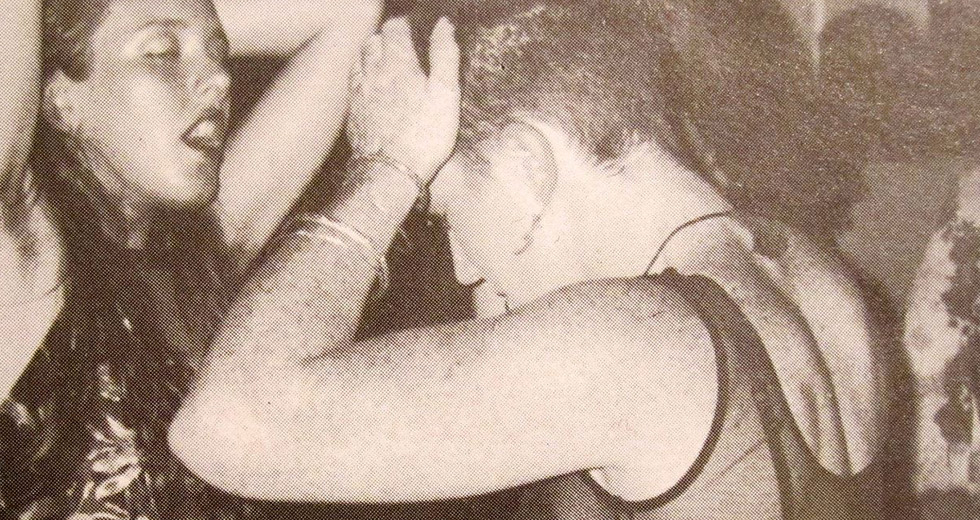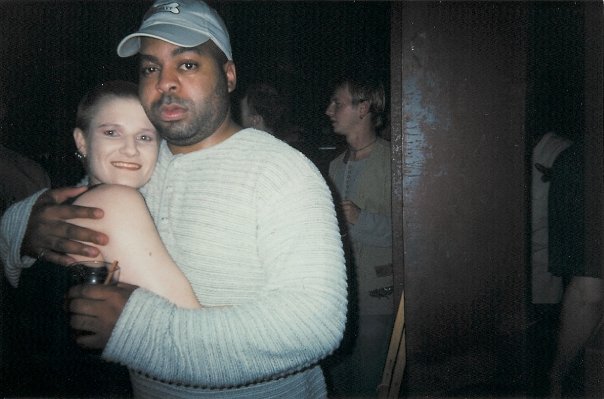Nightclubbing: Baia Degli Angeli
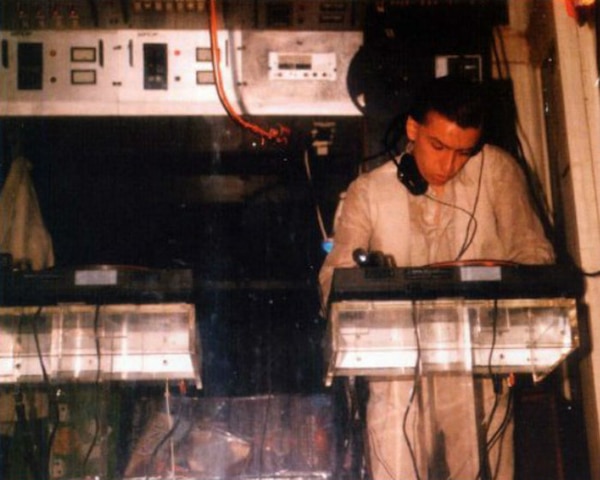
The Italian Studio 54 was not only one of the most glamorous clubs of the ’70s, it was also one of the most musically adventurous.
At its peak, Italy’s Baia Degli Angeli was the most glamorous and musically adventurous nightspot in Europe. Perched on the picturesque hills of the Adriatic coast, the club looked like something out of a Bond film. The crowds were rich and successful, beautiful people from the worlds of fashion and film. It was in some ways an Italian Studio 54 – except Baia opened two years before the infamous NYC club. Fittingly, Grace Jones was a regular.
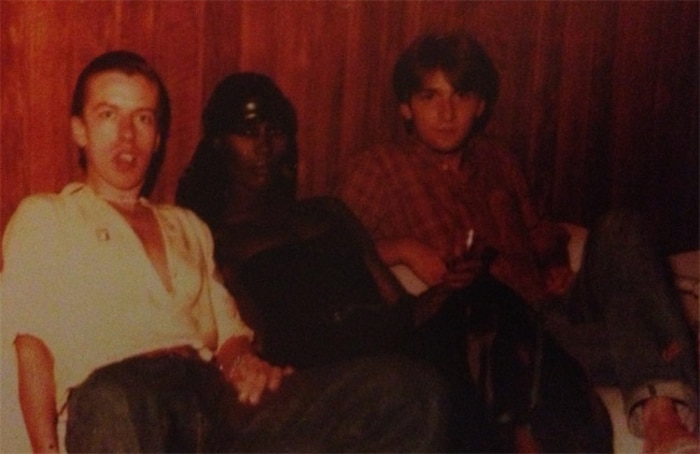
Spread across four floors and capable of holding 2,000 people, the interior was snow white, contained two swimming pools and was purportedly designed by Valentino. The most over-the-top touch was the DJ booth, which was located in a glass elevator and could play to multiple dance floors at once. But as great as Baia looked, it was the music that made it legendary: first by introducing New York disco and later as the sounds mutated into new, tripped out directions via its most well-known DJ, Daniele Baldelli.
Baia was originally a sports club and had been a hangout for Italy’s rich long before it was a famous nightclub. However, in 1975 the trajectory changed when a new owner, Giancarlo Tirotti, took over. Tirotti was a local tycoon and a man with connections in the Italian film industry. On one of his frequent trips he was introduced to New York’s disco scene and immediately fell in love. With plans to bring back a slice of The Big Apple, he convinced an unknown local DJ, Tom Sison, to return with him.
Facts about Tom are hazy. Many accounts say he was originally from Puerto Rico but settled in Greenwich Village. He may well have worked the bar at The Flamingo, an exclusive gay New York hangout that opened in 1974. This was a venue which, as well as having some of the city’s best looking boys, also had some of its best DJs, most notably Richie Rivera who later mixed a handful of classic disco hits such as Gaz’s “Sing Sing.” Whatever the case, it’s probably fair to guess Tom was exposed to some of the best DJs of the era.
When Tom eventually arrived in Italy, he brought his then partner, Sterling St Jacques: a stunningly handsome socialite who was known as the first black male supermodel and would later have an acting and music career of his own. Sterling didn’t stay long in Italy, and needing someone to help man the decks at Baia, Tom sent for his friend, Bob Day. What then began was one of the most influential partnerships in Italian dance music.
Listen to recordings of their early sets at Baia and you get the raw, authentic sound of NYC disco. Heart wrenching Philly soul blended with funky, upbeat tracks from artists like George McRae and Vernon Bunch. Generally, it was a playlist not a million miles away from David Mancuso and The Loft. Tom and Bob played music simply light years ahead of their Italian contemporaries, none of which had access to imports.
As well as playing American records, Bob and Tom played them in a distinctly American way: They could mix, a skill that was almost unheard of in Italy at the time. To the unsuspecting Baia crowd, with no idea about New York disco culture, Tom and Bob seemed to be beamed in from another planet. Gianni Zuffa, who became a regular at Baia, told DJ History that first hearing Bob and Tom mix was like a “a bolt of lightning.”
To the unsuspecting Baia crowd, with no idea about New York disco culture, Tom and Bob seemed to be beamed in from another planet.
The norm in Italy, as a DJ, was to announce each record over the microphone and play music in a strict order: five slow songs followed by five fast ones. What’s more, most DJs didn’t actually play their own records but would instead play the collection of records owned by the club. Very few Italian DJs had even contemplated blending records. If DJs were celebrated at all, it was due to their banter. In most cases, their status was below that of the bartenders.
Bob and Tom changed all that. The Americans became hugely popular, not to mention a great selling point for Baia. As tapes of their sets were passed around, word of Baia began to spread around Northern Italy with partygoers travelling from as far as Rome to experience the amazing venue and music. By the summer of ’76 the club was on a high – both in the sense that it was packed and because an increasingly druggy element was creeping in.
For Triotti, this era was the ultimate peak. As he told journalist, Max De Giovanni, in an interview: “Baia’s greatness was its ending. Disco was very changed since people arrived from everywhere. No more every kind of people, but only night dancers who lived their lives too intensively. I decided to sell Baia on summer end 1977 and I went to live in Africa for some years.” Triotti sold the club to a consortium of five Italian businessmen. Bob and Tom returned to the States and, sadly, faded into obscurity. The reasons why are not clear although, in truth, the explanation may be something as simple as homesickness. This ushered in a new era: one where homegrown Italian talent would take the mantle.
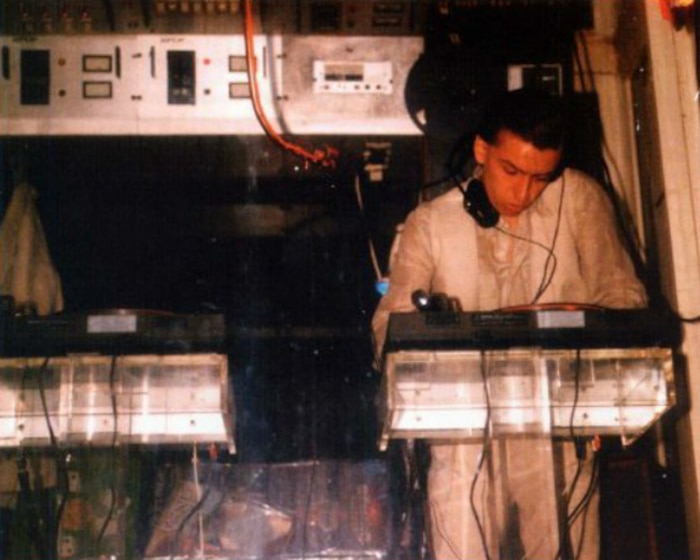
Danielle Baldelli lived only 2km from Baia in the town of Cattolica. He’d already begun working as a DJ, gaining employment in Tabu club, a local party venue that opened in the afternoon and again at night. Like most Italian DJs, he used the five slows and five shakes style of DJing, but unusually brought his own records to the club. Although he didn’t have access to imports, he clearly had taste. American R&B from Rufus Thomas and Ann Peebles sat comfortably with the funk of James Brown and rock from The Stooges.
Notably, he had the skill to build a set by selecting records that had complementary tempos and moods. When his friend, a former bar worker at Tabu, gained employment at Baia, the young Baldelli decided to see what the fuss was about. What greeted him, as well as the undeniable glamour, was Bob and Tom in full flow. Too shy to talk to the American DJs, Daniele simply observed – and borrowed the duo’s trick of using 7-inch records in their sleeves to create rudimentary slip-mats, allowing them to cue the records more accurately and keep a non-stop flow.
Baldelli would lock himself in his room for days on end, playing 200 records into one just to see which fitted best.
In a twist of fate, Bob and Tom later dropped in to one of Daniele’s early afternoon sessions at Tabu. To his surprise the Americans seemed to like what he was playing, despite the fact he was still not mixing. They left him with a signed copy of Lolleta Holloway’s “Hit and Run” and the advice that he should start honing his technical skills. Buoyed by their advice, Danielle quickly learned the basics of disco mixing. Later, he would take it to the nth degree: locking himself in his room for days on end, playing 200 records into one just to see which fitted best.
When Tom and Bob left Italy, they suggested Daniele would be the ideal substitute at Baia. Baldelli was anointed the new resident alongside Claudio Rispoli, AKA Moz-Art, who’d been making a name from himself at a club called New Jimmy. Baldelli remembers being pretty happy that he had a partner to share the responsibility. “I was afraid of this new work because Baia, for me, was something very important.”
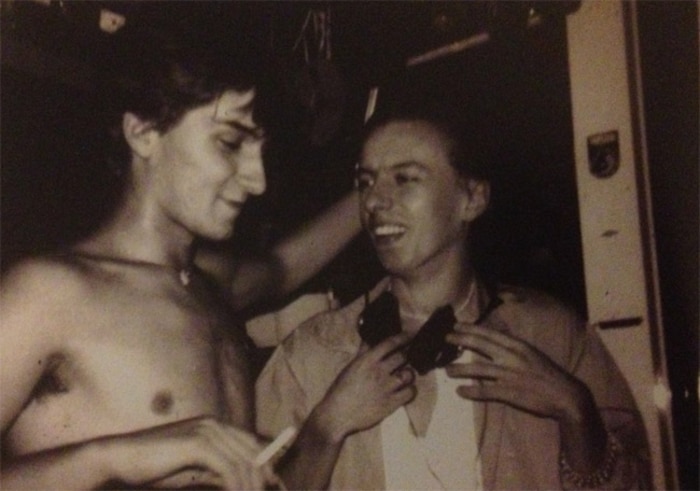
Initially it was a challenge to simply fill the big shoes of the American DJs. At first Baldelli and Moz-Art were simply trying to find the Baia anthems that Tom and Bob had made their own. Luckily the start of their tenure coincided with the first imported records hitting Italian shores. Still, this didn’t make the job easy. As Baldelli remembers, “It was difficult because I didn’t know the titles or artists. I spent many hours in the shops and eventually I would find a track. “Oh, I listened to this from Bob last year.” At that time, I took everything from the States and the UK.”
After a time, both Moz-Art and Baldelli’s individual personalities began to shine. Baldelli was a perfectionist who would meticulously plan his sets and execute them flawlessly while drinking nothing stronger than Coca Cola. Moz-art was an arty slacker whose classical musical background meant he could simply rely on his feel for music. Unlike the straight-edge Baldelli, Moz-Art would sometimes play sets totally off his face on acid.
Unlike the straight-edge Baldelli, Moz-Art would sometimes play sets totally off his face on acid.
Both played plenty of typical American disco classics, but the dedication to digging caused them to discover some truly unusual stuff. Among the strangest were Black Devil’s “H Friend” and Arpadys “Monkey Star,” the latter a French library track, originally intended to soundtrack advertisements, that sounds like “Supernature” on a trip to The Congo. The summer of ’78 saw the Baia become more popular than ever. A younger, wilder clientele began to mix with the models and film stars. Fueled by champagne and cocaine, 3,000 people a night would party till sunrise: a closing time that was almost unheard of in the time period.
Perhaps unsurprisingly for Northern Italy, this casual debauchery didn’t go down well with the locals. On October 21, 1978, Baia was closed. The boss of the club, Diego Leoni, was sent to jail for 15 days and a local newspaper ran a story saying the club’s “mere existence promotes drugs between young people.” Though the presence of narcotics was undeniable, Baldelli says the real problem was the fact the club pissed off their rich neighbors. “There was drugs and alcohol, everything. The problem really was the club was in the village by the sea in a touristic place, so these people coming to the club, many of them came by train and walked 3km from the station of Cattolica to Baia. Then at 5 AM, after the party’s over, everybody go on the beach and make a lot of damage. So all the local people were very angry with Baia. They tried all the possibilities they could to make it close.”

When Baia shut, Baldelli and Moz-Art became damaged goods. “Everybody spoke about me as the DJ of the druggiest, drug people,” says Baldelli. “Nobody wanted me!” Moz-Art and Baldelli parted ways. Baldelli even tried to revive his gig at Tabu club, but the police quickly shut down the events. Nothing happened for either DJ until mid ’79 when Baldelli was asked to DJ at a new club in Lake Garda called Cosmic. At that same moment, Diego Leoni was trying to revive Baia from its deathbed. Daniele chose to stick to his commitment at Cosmic, so Baia re-opened with Moz-art at the helm. When both DJs returned to the DJ booth, they came at it with a fresh perspective.
Baldelli re-pitched dub reggae records, making them sound like proto-techno, and slowed down instrumental disco till it resembled creepy science fiction soundtracks.
A new record shop, Disco Più, had recently opened in nearby Rimini. Più was more of a musical library than a regular record store, stocking almost every conceivable niche of music. Both DJs delved head long into Afro, jazz, rock and oddball electronic influences. The owner Gianni Zuffa even went to the ridiculous extent of sending Baldelli one of every record that came into the shop. Moz-Art’s playlist started to move away from the strutting New York disco in favor of off-kilter, world music influences such as Manu Dibango’s “Weya” and Fela Kuti. Baldelli’s set list became even weirder: drugged out, dubbed out electronics mixed with Ravel’s “Bolero,” African chanting and psychedelic rock.
Interestingly for Italian disco DJs, neither played Italo disco: the cheesy Hi-NRG sound that became popular starting around 1980. Both DJs started messing with the EQ’s and speeds of records, playing 33’s at 45 or vice versa. Although this had been going on to some extent since the days of Bob and Tom, Baldelli took this to the extreme by re-pitching dub reggae records, making them sound like proto-techno transported in from Saturn, or slowing down instrumental disco till they resembled creepy science fiction soundtracks. By 1980, both DJs had successfully ripped up the disco rule book, making dance floors sound weirder and more stylistically wide-ranging than they had ever done before or since. Moz-art and Baledlli’s subsequent work and the DJs they inspired have retrospectively been labeled the Afro-cosmic scene, though trying to pick out the individual contributions to the whole is a fruitless task.
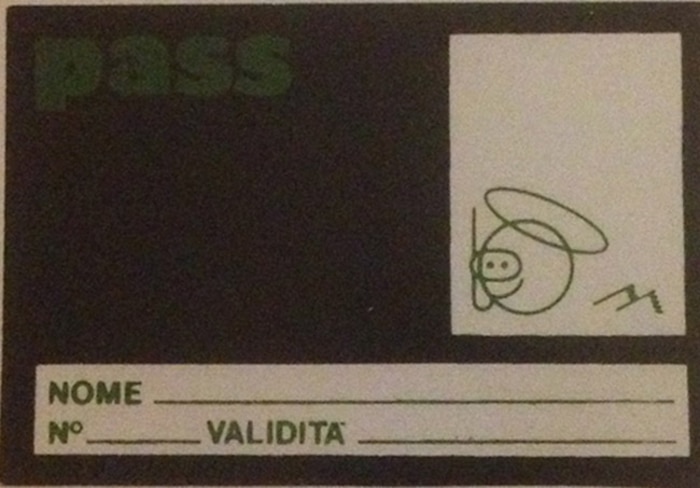
Unfortunately, the reopening of Baia was not a success. It only lasted for a few months until 1981 when it was shut for good by the authorities. Drug use was becoming a bigger problem generally in Italy at the time. Even though Cosmic club thrived with Baldelli, its crowds were known for their heroin use, though the true extent of this is debated. During Baia’s brief re-opening Moz-Art alternated with another hugely talented DJ, Rubens. As Gianni Zuffa, owner of Disco Più told DJ History, “A lot of the people who followed them said Rubens was the best (of all the Afro-Cosmic DJ’s).” However, Rubens himself served as a perfect analogy for the Afro-cosmic scene. He was, according to Zuffa, “less of a public relations guy, less good at getting on with people and then drugs… He lost it before anyone. He lost his lucidity way before the others.”
The fact that so little has been written about Baia and the Afro-Cosmic scene speaks much to the Italian press’ dismissal of the movement. Although Baldelli’s career stayed on track, the scene itself eventually fizzled out as the music became blander and the drugs became harder. But perhaps the biggest reason it was resigned to the history books is the fact that no records were produced from the scene. While the New York disco movement had DJs and producers working in tandem, no such leaps into the studio came from proponents of the Afro-Cosmic sound – although Moz-art made some important house and acid jazz records as Jesto Funk and Soft House Company. Nonetheless, the unique musical evolution, unmatched glamour and undoubted skill of its two leading DJs make it a period that still resonates today.
